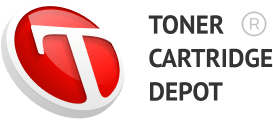 HP claimed it’s giving up its camera manufacturing business. Instead the company plans to focus more resources on Print 2.0 – the new web-centered printing concept.
HP claimed it’s giving up its camera manufacturing business. Instead the company plans to focus more resources on Print 2.0 – the new web-centered printing concept.
However, the company is going to maintain the brand and now is looking for an OEM partner that will design, build and distribute digital cameras under HP label.
HP wants to accelerate its investment in Print 2.0 initiative, which the company unveiled in May at its Imaging and Printing Conference in New York. According to HP, 53 trillion pages will be printed in 2010, creating a market valued at more than $296 billion. Most part of those pages is to be printed from the Web. HP’s Print 2.0 strategy is focused on using Web-based services to get a significant share of the growing number of digital pages printed each year.
This move of HP seems very logical, I mean who ever bought HP digital cameras?
Purchasing future revenues, HP also keeps up with current developments. Researchers from Palo Alto have created toner particles that are chemically grown. Usually toner powder is produced by mechanically grounding carbon block, but HP’s spherical monochrome toner is vat-grown.
Such chemical origination of toner has some advantages over regular toner. HP claims chemical growth of toner results in a consistently round toner particle. Even round particles allows for a more efficient printing process leading to a smaller cartridge. HP also claims that printer toner would be applied on paper more precisely because of the evenness of this new toner particle.
Let’s turn from Goliath to David. A start-up company from Cambridge, Inkski, has developed a very fast printing method. The new technology called “Lilo”, Light Initiated Liquid Offset, can deliver up to 400,000 drops per second from each channel. This is about 20 times faster than a general inkjet print head can produce.
Lilo works like this. Drops of ink are formed in a regular array on a rapidly rotating cylinder, using a photonic trigger to eject drops. The tiny drops can be held on the cylinder by surface tension balanced against the centrifugal force tending to throw them off. A laser beam releases drops from the cylinder.
The Lilo technology uses conventional inks and offers nearly similar per page costs as standard methods of digital printing, except pages can be printer much faster. The technology employs no nozzles, so there should be no clogging and smudging.
Hope to see new printer built using this technology.
